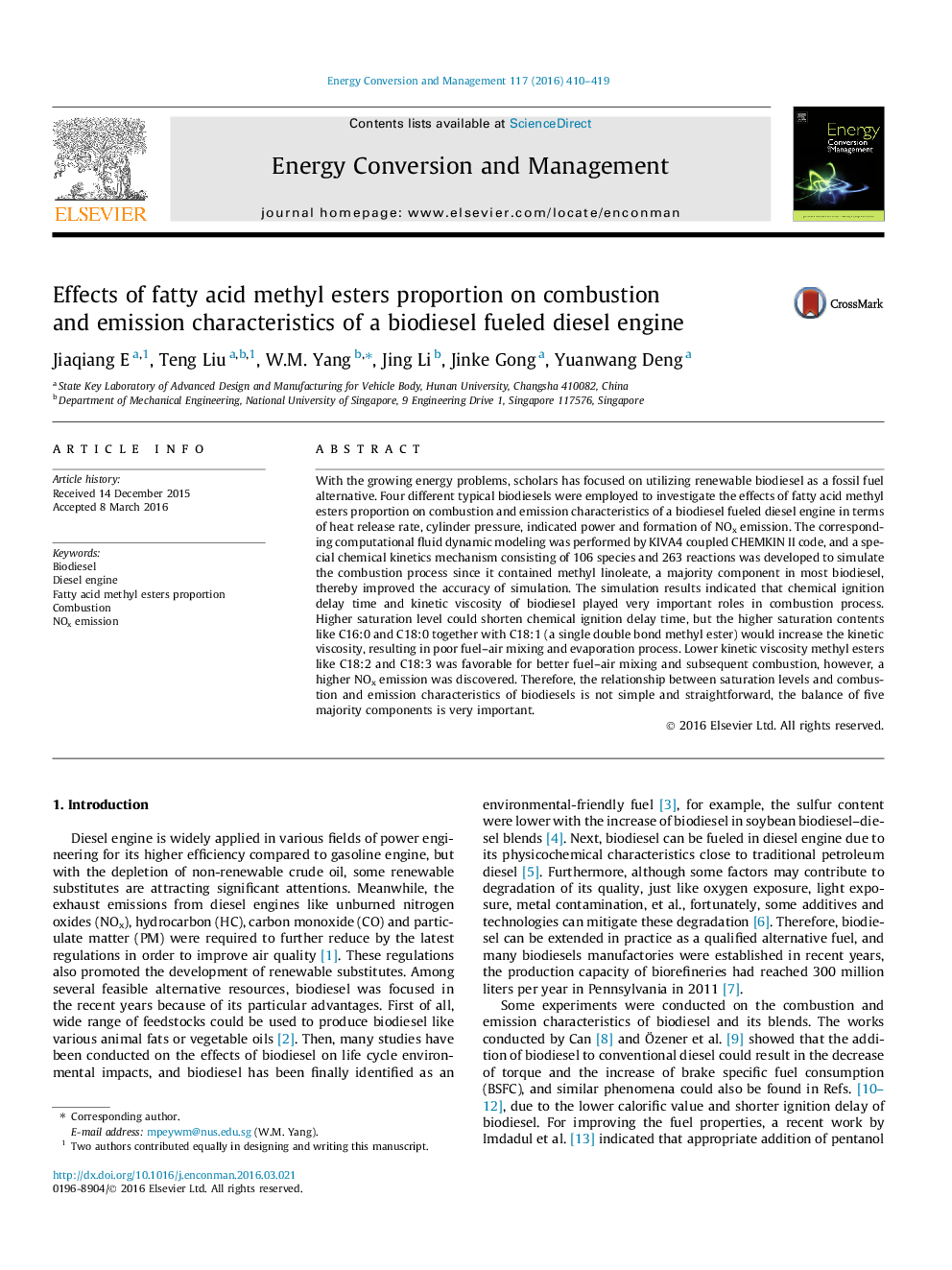| Article ID | Journal | Published Year | Pages | File Type |
|---|---|---|---|---|
| 7160920 | Energy Conversion and Management | 2016 | 10 Pages |
Abstract
With the growing energy problems, scholars has focused on utilizing renewable biodiesel as a fossil fuel alternative. Four different typical biodiesels were employed to investigate the effects of fatty acid methyl esters proportion on combustion and emission characteristics of a biodiesel fueled diesel engine in terms of heat release rate, cylinder pressure, indicated power and formation of NOx emission. The corresponding computational fluid dynamic modeling was performed by KIVA4 coupled CHEMKIN II code, and a special chemical kinetics mechanism consisting of 106 species and 263 reactions was developed to simulate the combustion process since it contained methyl linoleate, a majority component in most biodiesel, thereby improved the accuracy of simulation. The simulation results indicated that chemical ignition delay time and kinetic viscosity of biodiesel played very important roles in combustion process. Higher saturation level could shorten chemical ignition delay time, but the higher saturation contents like C16:0 and C18:0 together with C18:1 (a single double bond methyl ester) would increase the kinetic viscosity, resulting in poor fuel-air mixing and evaporation process. Lower kinetic viscosity methyl esters like C18:2 and C18:3 was favorable for better fuel-air mixing and subsequent combustion, however, a higher NOx emission was discovered. Therefore, the relationship between saturation levels and combustion and emission characteristics of biodiesels is not simple and straightforward, the balance of five majority components is very important.
Related Topics
Physical Sciences and Engineering
Energy
Energy (General)
Authors
Jiaqiang E, Teng Liu, W.M. Yang, Jing Li, Jinke Gong, Yuanwang Deng,
